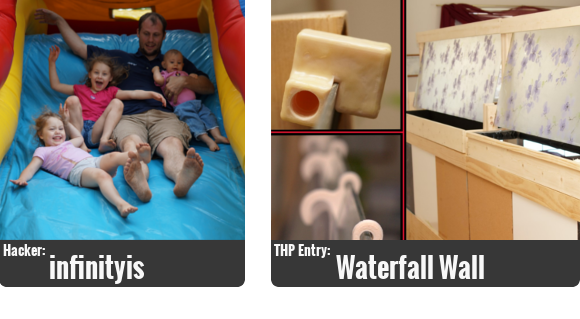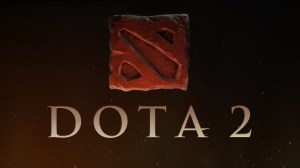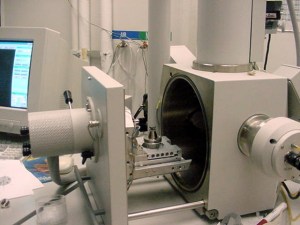GUEST POST
Above: Africa
Image Credit: Anton Balazh/Shutterstock
Let's get one thing straight, some of the entrepreneurs I've encountered in Africa are among the best I've ever met. The fantastic DIY attitude and incredible amount of motivation are driving the developing continent faster than ever before. I'm intrigued by homegrown startups like BRCK, which is creating a router that can run without electricity, and Kopo Kopo, which is removing friction for SMEs in adopting mobile payments.
Unsurprisingly, IDC predicts investments in African tech will increase this year, with both public and private spending in the sector rising. 2014 holds the potential for African companies to continue along the road of rapid growth, yet there's one element African entrepreneurs think is holding them back — funding.
What's the problem?
I spoke to a couple of partners at Amadeus Capital, which invests in African startups, to find out what the key roadblock is.
As Amadeus' Jason Pinto puts it: "All the good entrepreneurs say there is no money, and all the people with money say there are no good entrepreneurs."
Across the continent I've seen emerging startups struggle to find initial investments. For example Banks in Ghana are reportedly charging up to 28 percent interest on business loans. Some international VC firms like Intel Capital and Summit Partners occasionally finance African tech firms, but many of the others are still wary.
"Amadeus invests globally, we invest everywhere. The African ecosystem, at least sub-Saharan Africa, is probably the least mature of all the markets we're looking at right now," Pinto tells me. "We can define maturity by the number of repeat entrepreneurs, the scale and experience of these entrepreneurs, the capital available from numerous sources, and the number of profitable and successful exits that have happened in the market in the past."
So to reach maturity, we need African entrepreneurs who have done it before, and who have failed before. So who will fund the first few failures? "It's a vicious cycle," Pinto comments.
Breaking that barrier
One of the main barriers it seems is that many African startups are focused on the local and regional opportunities. A real catalyst to getting the entrepreneurial ecosystem in Africa running is that one, ambitious, global African success story.
"I think local heroes are critical," Perry Blacher, another partner at Amadeus, tells me. "You have to find the exception rather than the rule and point new investors towards that success. Take Skype as an example in Europe. Once Skype had been built and sold for billions as a global business, other European entrepreneurs saw that it was possible to build a massive business in Europe."
Breaking that psychological barrier and showing others that success can be global is incredibly important. Like Europe, Africa is not a single market for companies to scale in, it is a complex collection of countries with separate languages, currencies, rules, and regulations. For this reason it is a riskier market to break into. There is a way to reap the rewards when you figure out how, but everything should be done with a global perspective, not just an African one.
The African advantage
Both Pinto and Blacher agree that for entrepreneurs to succeed in Africa, making the most of local advantages is absolutely key. For VCs it is all about identifying these advantages and investing in businesses that understand them.
"In Africa labor is cheap, you have English speakers, and you're on the same time zone as Europe. It's all about looking for local advantages. Think about what resources aren't available elsewhere," says Blacher.
Europe still isn't the most mature market in the world either, say Pinto and Blacher Just 20 years ago they were seeing the same things happening across the investment community in Europe. Both agree that uncovering an important local asset to address a global opportunity was one of the first steps for Africa's global success.
VC money can be a curse
Pinto and Blacher both point out that African entrepreneurs need to continue to remind themselves that VCs are right at the end of the risk-reward spectrum, betting on the very small chance of something very big happening. They aren't just looking for a less-risky chance of something pretty good happening.
"Remember, you wouldn't chop down a tree with a kitchen knife, or cut a tomato with a chainsaw. Venture capital might not be right for certain businesses or stages. Entrepreneurs can derail their company by taking venture money when it doesn't fit the time and rhythm of what they're doing," says Pinto.
Africa is not Silicon Valley. So it is imperative that African entrepreneurs consider all kinds of funding. Loans, family and friends, focus on cash generation from operations, and other sources are key to getting entrepreneurs on the VC radar. And then, if you have a global product, VC money will find you. "Venture capital is the most 'mobile,'" Blacher says. "If you have big dreams, then venture is absolutely right for you. I can promise you if have a good opportunity in Lagos, you will find people from the U.S. down there to back it."
Building bridges
"We need more African entrepreneurs and investors spending time in Silicon Valley and London," says Pinto. "The more close to home people view opportunities, the less the perceived risk."
We all agree that we need more African entrepreneurs in Silicon Valley. We need them to bridge the gap and invest in what they know. African investors may feel closer to home investing in Africa and may perceive less risk than American born VCs. We need to bridge the perception gap by having Africans operating in Silicon Valley in the same way we see the Brazilians and Indians doing it. The true risks in Africa are not political instability, corruption, etc. Africa's risk is lack of development of its ecosystem and challenges in addressing a broad market by its entrepreneurs.
Following my discussion with Pinto and Blacher and based on my own experiences leading one of the Middle East and Africa's fastest growing companies, it is clear to me that frontier venture capitalism can't just be about tackling Africa, but all emerging markets. People like Blacher and Pinto are looking for the next big breakthrough that can impact and benefit the world, not just one country or one region.
[A special thanks to Jason Pinto and Perry Blacher at Amadeus Capital Partners for sharing their expertise with me for this article.]
Amr Shady is the CEO of TA Telecom, one of the fastest-growing companies in the Middle East and Africa. Jason Pinto and Perry Blacher of Amadeus Capital Partners have funded and supported more than 85 young companies globally and helped them grow.









 Gaming. When I'm with siblings and/or parents, we'll play board games (Ticket to Ride, Catan), card games (Flux, Munchkin), or party games (Mafia/The Resistance, Telestrations, Wits and Wagers). I also enjoy playing video games; even though my brother and I live hours apart, we keep in touch regularly when we play games on Steam (Dota2, TF2). When it's just me by myself though, I like to create by writing software, designing circuit boards, and making physical objects.
Gaming. When I'm with siblings and/or parents, we'll play board games (Ticket to Ride, Catan), card games (Flux, Munchkin), or party games (Mafia/The Resistance, Telestrations, Wits and Wagers). I also enjoy playing video games; even though my brother and I live hours apart, we keep in touch regularly when we play games on Steam (Dota2, TF2). When it's just me by myself though, I like to create by writing software, designing circuit boards, and making physical objects. For hacking purposes: Linux. With a wide array of free and open source software tools, along with the ability to scale from the tiniest of processors to massive server farms, it is like a breath of fresh air in that you *know* that it is possible to achieve what you want to do with it.
For hacking purposes: Linux. With a wide array of free and open source software tools, along with the ability to scale from the tiniest of processors to massive server farms, it is like a breath of fresh air in that you *know* that it is possible to achieve what you want to do with it. My initial thought was a high performance oscilloscope with a big touchscreen, lots of buttons/controls, and high voltage differential probes, but….after further reflection I think my favorite is a Scanning Electron Microscope (SEM). When I would see SEM images in research papers or science textbooks, I assumed that such incredible magnification is a privilege reserved for…well…researchers and textbook authors. I've actually been fortunate enough to work with a SEM and it was just as amazing as I'd hoped it could be. The experience was even better than I suspected because you can actually pan/zoom around the sample in real-time and perform spectral analyses, which was not obvious from the textbook pictures. [
My initial thought was a high performance oscilloscope with a big touchscreen, lots of buttons/controls, and high voltage differential probes, but….after further reflection I think my favorite is a Scanning Electron Microscope (SEM). When I would see SEM images in research papers or science textbooks, I assumed that such incredible magnification is a privilege reserved for…well…researchers and textbook authors. I've actually been fortunate enough to work with a SEM and it was just as amazing as I'd hoped it could be. The experience was even better than I suspected because you can actually pan/zoom around the sample in real-time and perform spectral analyses, which was not obvious from the textbook pictures. [ At the risk of betraying my analog/power roots, I'm torn between a microcontroller and an FPGA. I really like the MSP430 for the incredible performance/price ratio and low power consumption. But there was also a particular Altera Cyclone FPGA in my life (you know who you are!) that was incredible to design with: it was basically like a tiny electronics factory. I could dedicate some logic cells to perform simple arithmetic operations, some others to handle communication protocols, and still others to implement multiple Z-transformed digital compensation networks—and all of it operated concurrently and deterministically in a time-bound manner. [
At the risk of betraying my analog/power roots, I'm torn between a microcontroller and an FPGA. I really like the MSP430 for the incredible performance/price ratio and low power consumption. But there was also a particular Altera Cyclone FPGA in my life (you know who you are!) that was incredible to design with: it was basically like a tiny electronics factory. I could dedicate some logic cells to perform simple arithmetic operations, some others to handle communication protocols, and still others to implement multiple Z-transformed digital compensation networks—and all of it operated concurrently and deterministically in a time-bound manner. [ I think one of the most challenging parts of this project will be coming up with an elegant user interface for doing interesting things with a strand of LEDs. Setting all the LEDs to a single color or individually setting each LED to a particular non-time-varying color will be a necessary foundational step. Beyond that, my hope is to come up with an intuitive user interface for real-time manipulation of the LEDs, and/or a simple method of inputting algorithms to generate moving patterns. I welcome any suggestions for how to design such an interface. [
I think one of the most challenging parts of this project will be coming up with an elegant user interface for doing interesting things with a strand of LEDs. Setting all the LEDs to a single color or individually setting each LED to a particular non-time-varying color will be a necessary foundational step. Beyond that, my hope is to come up with an intuitive user interface for real-time manipulation of the LEDs, and/or a simple method of inputting algorithms to generate moving patterns. I welcome any suggestions for how to design such an interface. [

